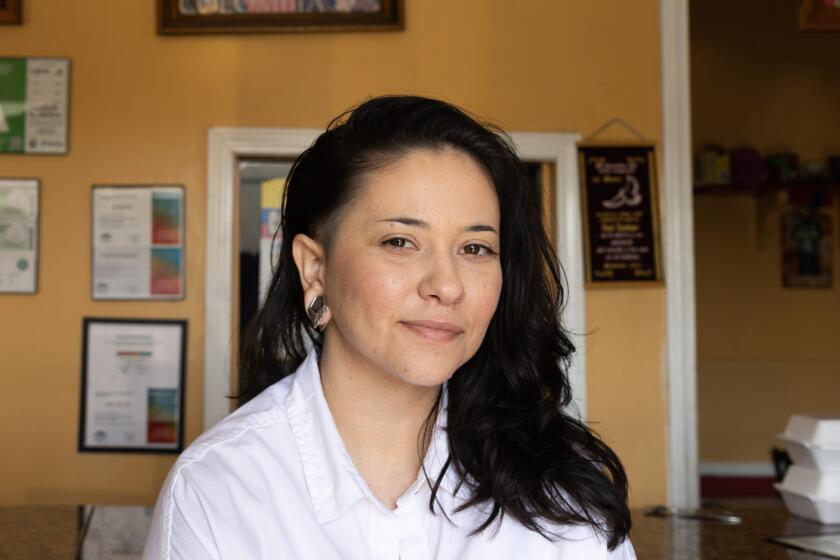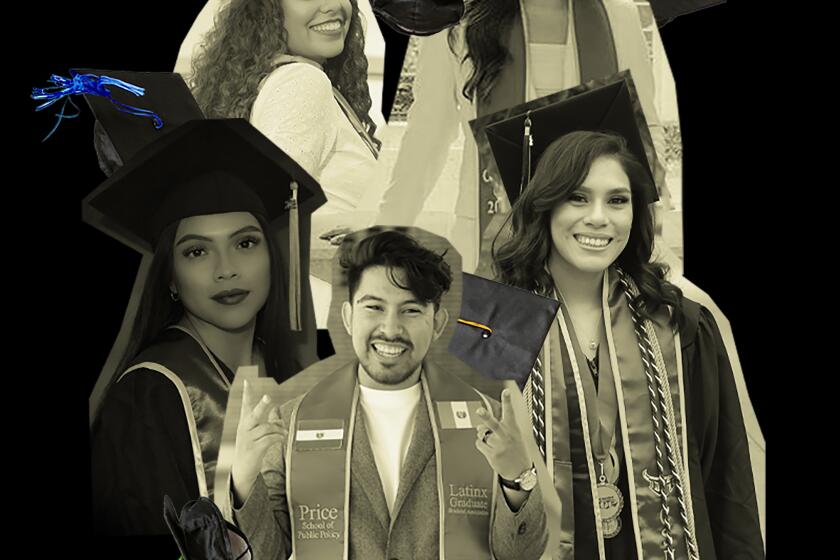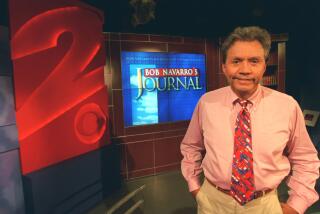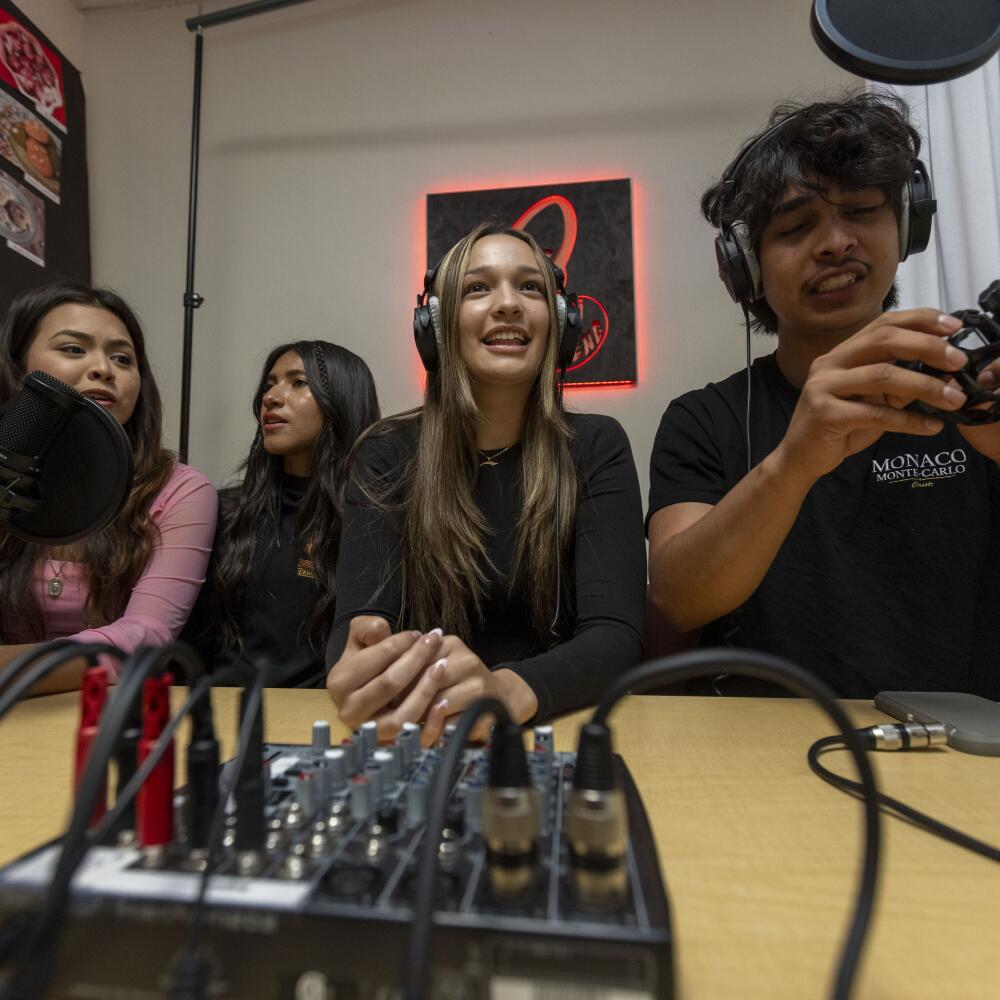
- Share via
A few weeks into the school year, the editorial staff of the Downey Legend filter into Downey High School’s Room S26 and settle into their seats.
Today is pitch day — students are expected to come to class prepared with a story idea to tackle in the coming weeks, if their fellow journalism students think it’s interesting and they get the approval of their co-editors in chief, Madeline Hidalgo and Ximena Solorzano. Both are seniors who are opinionated but kind, questioning but courteous. They have a knack for asking just the right questions to get to the heart of a story. And after serving on the newspaper staff for three years, they also have a keen sense of what reporting goes over well with the larger student body. They run a tight ship, and there’s little room in Hidalgo and Solorzano’s busy editorial schedule for lackluster reporting.
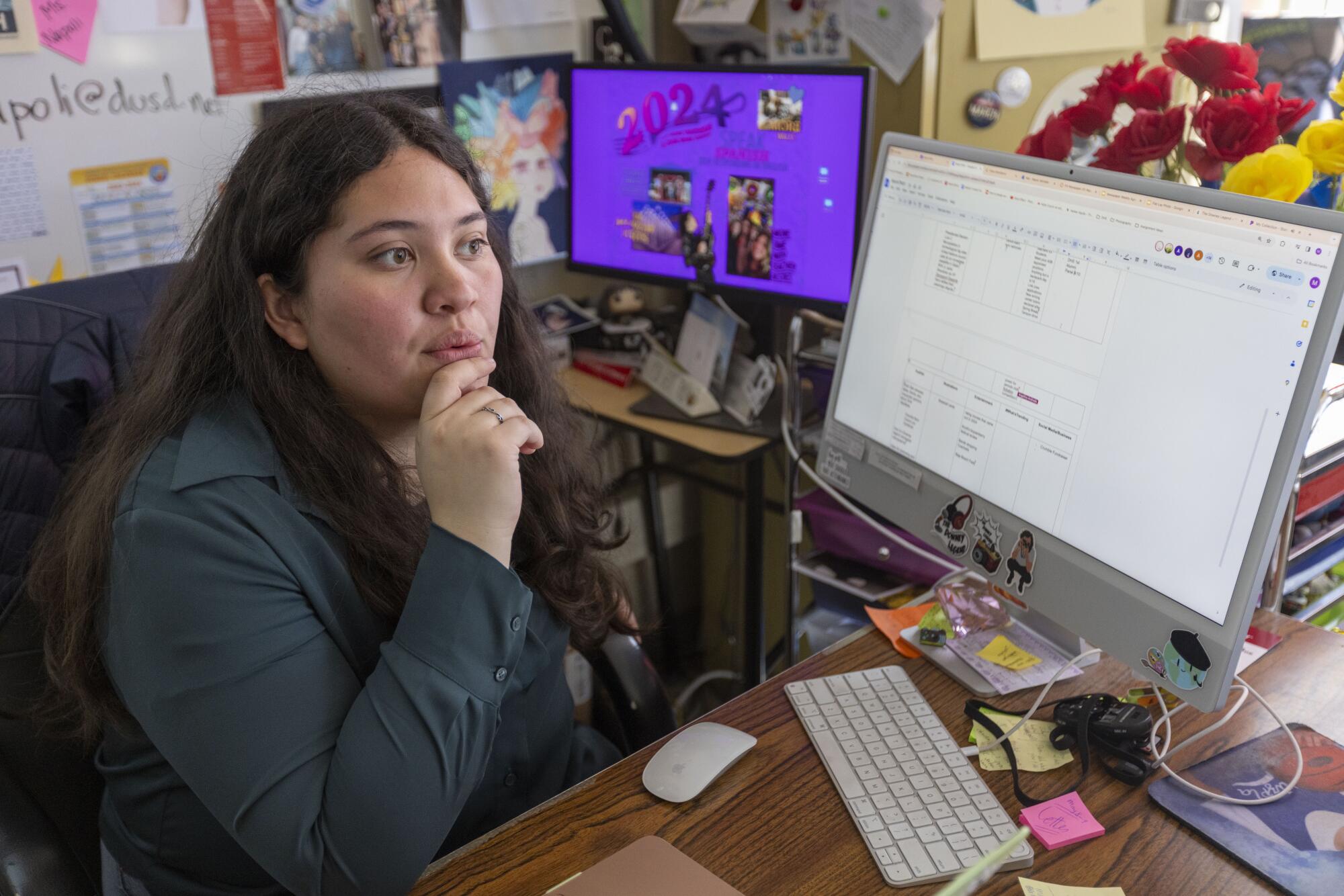
During the session, senior Angelina Andrade, a Downey Legend veteran, pitches a story worthy of the front page: The school abruptly cut a number of elective courses, leaving some recently hired teachers without jobs and students scrambling to fill gaps in their schedules. Andrade would later deliver on the story, reporting that the chaos was the result of more than a hundred of the city’s teachers retiring over the summer, leading Downey Unified School District to go on a hiring surge. The problem, she reported, was that student enrollment rates in the fall were far lower than expected.
For a moment, it appeared as if Downey High School’s photojournalism class was on the chopping block, which would have been a devastating blow to a small but enormously important ecosystem that has taken shape in the school system over the last two decades: a pipeline for working-class Latino students interested in pursuing journalism.
“Journalism has always been a big part of our schools in Downey Unified,” explained the district’s director of secondary education, Rani Bertsch. “I began working in Downey Unified in 1994 and we already had well-established journalism courses at the middle and high school level.”
Gisselle Palomera left their religion at 15, causing a rift in the relationship with their mother. Now at 26-years-old, they are finding new ways to improve their communication.
The district’s journalism offerings have evolved with the times and with the goal of preparing young people for 21st century careers.
Middle schools in Downey Unified now offer courses and training in advanced journalism, video production, digital photography, and even podcasting. These courses feed directly into what the district calls Career Technical Education Pathways, a program that enables high school students to earn college credit through dual enrollment with Cerritos College and Cal State Long Beach. High School students who are interested in pursuing a career in journalism also have the option to take electives such as advanced journalism and newspaper — classes that come with opportunities to develop real-world experience.
In October, when SoFi Stadium hosted its first-ever high school football game between rivals Downey and Warren high schools, Downey Legend reporters were in the press box and on the sidelines alongside professional journalists. Prior to the game, students attended the mandatory meeting for the media. Downey Legend staff members also have the opportunity to contribute to the local newspaper, the Downey Patriot. For those more interested in the communications side of the industry, the district offers a summer internship that allows students to shadow public relations professionals.
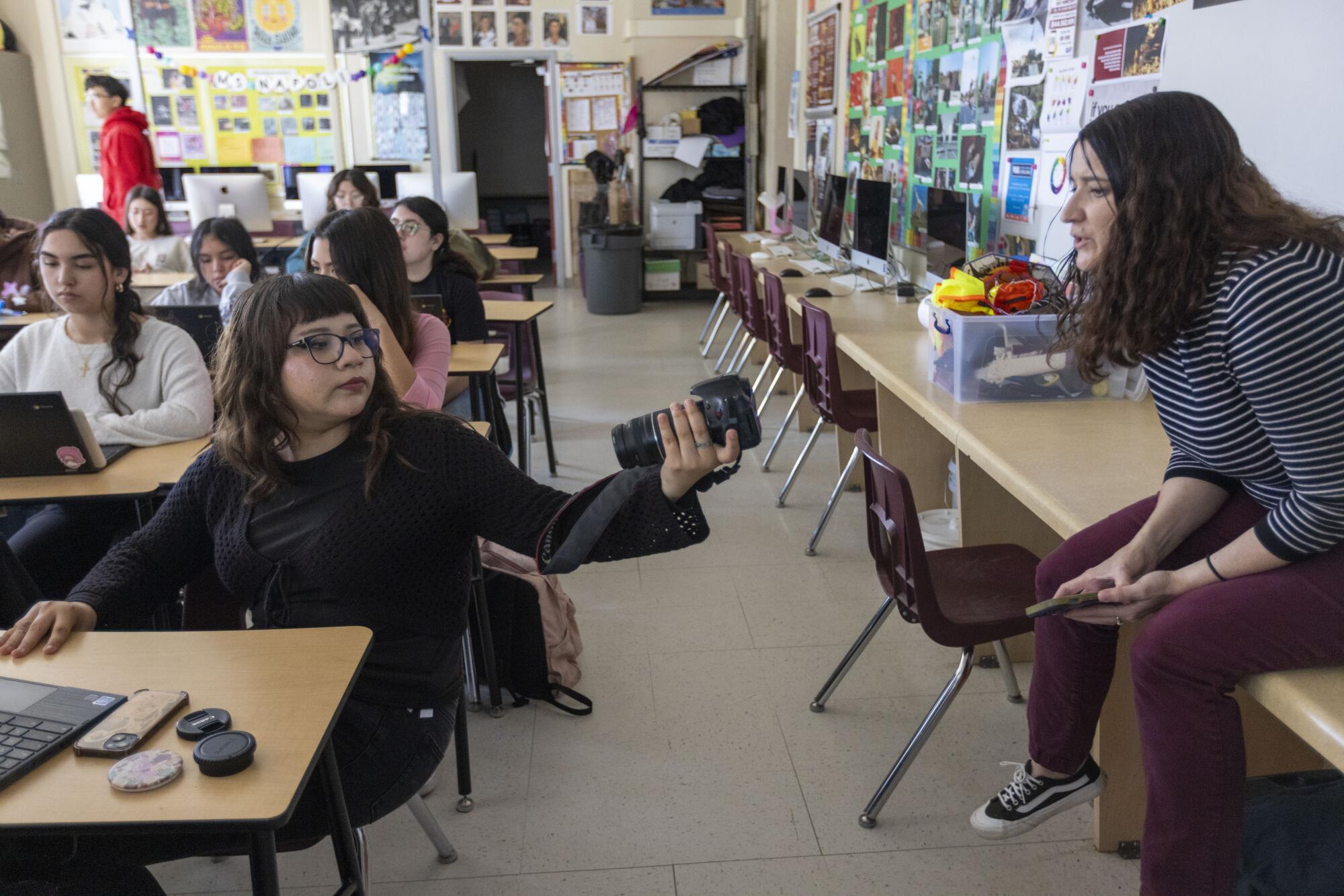
Of the 30 or so students in newspaper advisor Michelle Napoli’s journalism class this year, almost all of them are Latino and, more specifically, Latinas. To attend school in Downey, many come from working-class communities, including Compton, South Gate, and Paramount. Overwhelmingly, the students’ parents are immigrants, or first generation, and they prioritize the schooling their children receive in Downey, which has an education budget that far outpaces others in Southeast L.A. County.
The backgrounds and demographics of the Downey Legend staff are entirely unlike those of newsrooms nationwide. Once a blue-collar trade, journalists now disproportionately come from affluent families. In English-language newsrooms across the United States, Latinos remain largely absent. In fact, there are severe disparities in Latino representation across all sectors of journalism, including broadcast news, cable news, print newspapers and digital news sites.
But while the number of Latinos in the media industry has remained stagnant, growing just 1% between 2010 and 2019, the city of Downey has spent years quietly implementing journalism infrastructure that has the potential to change the face of local reporting and serve as a model for school districts nationwide.
Cohesive learning experiences
Trust in journalism is at a record low and media literacy — or the ability to critically analyze and evaluate information — is also severely lacking. This was evidenced by successful online misinformation and disinformation campaigns that targeted Latino communities and contributed to warped perceptions of the election and the COVID-19 pandemic. Downey Unified did not intentionally set out to rectify larger societal problems, but its focus on journalism effectively provides the young Latinos who make up a majority of the student body with training in media literacy, a sense of social responsibility and a career path for entering the field.
Elementary schools in Downey Unified are now part of this pipeline, and the training can start as early as first grade.
Downey Unified is home to eight of Apple’s Distinguished Schools, chosen by the company for their innovative implementation of Apple technologies that enhance student learning. Every elementary and middle school student in the district receives an iPad, and each elementary school offers journalism training through “innovation labs” that allow schools to host weekly news presentations.
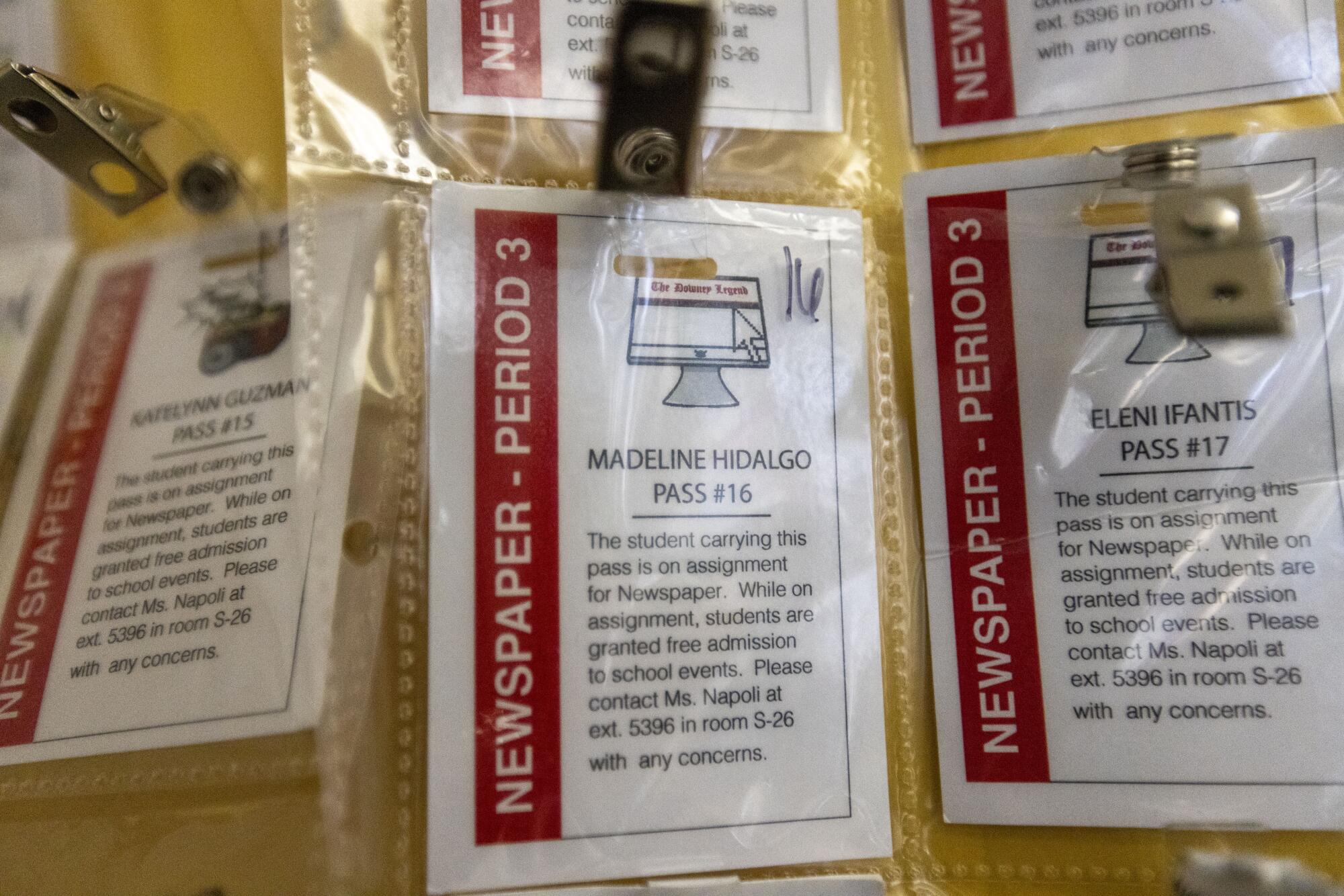
Allison Box has been a school principal in Downey Unified for 12 years, seven of which were spent at Lewis Elementary School, one of the first schools in the district that transitioned a basic computer lab into an innovation lab using funds from a grant. Initially, the school developed a student tech squad and the lab was intended to focus on engineering and design. Teacher Susan Fisher had the idea to expand the focus to media, using the technology available to teach Lewis students research and reporting skills.
According to Box, Lewis became the first elementary school in the district with a floor-to-ceiling green screen, used by the student news anchors who broadcast the morning announcements.
“What we’ve tried to do is leverage technology tools to lead to deeper understanding and learning,” Box said. “And ultimately kids become the designers of their own innovative learning experiences.”
Children who aren’t interested in being in front of the camera have the opportunity to learn about script writing, sound engineering, lighting and other behind-the-scenes skills that bring broadcast journalism to life.
The Lewis News Team, as it’s known, is an offshoot of the tech squad, and Lewis’ current principal, Tami Francis, says the program is the most sought-after at the school. Around 80 students apply each year to join the news team, many of whom go on to middle schools in the district where they can continue to build on their journalism skills.
Many students are embarking on an exciting yet unfamiliar journey: their first year of college. There are particular challenges for first-generation students.
“In Downey Unified, we’re striving to create cohesive K-12 learning experiences, and with journalism, there is now a pathway for students to continue working on these skills through high school and beyond,” Francis said. “It’s important that this is a district-wide initiative so that every student in our district receives the same opportunities.”
Children from out of town also benefit from the district’s journalism offerings. South Gate resident Andres Campos is a seventh-grader at Sussman Middle School, where he said an introduction to journalism class with teacher Steve Schmaltz sparked his interest in the behind-the-scenes work of broadcast journalism. Now, Campos works with his best friend and fellow South Gate resident Jeffrey Aceves, 13, to create graphics, oversee the soundboard and perform other tasks associated with the school’s daily news broadcast.
Campos was initially drawn to Sussman’s journalism offerings because of his interest in technology. Now at 13, he’s considering a future in journalism. He already plans to take photojournalism classes when he attends Downey High School.
The news airs in Sussman classrooms three times a week and Schmaltz said he relies on the broadcast journalism students to deliver. That seems to inspire confidence in Aceves, Campos and other students.
“Mr. Schmaltz told us this was more of a job than a class and that’s why I really wanted to join,” Aceves said. “I like the feeling of having this job … and these types of classes prepare us for the future.”
Campos said he feels lucky to attend school in Downey because he knows other school districts, including the one where he lives, do not offer the kinds of courses or provide the same access to technology that Sussman does.
“We have what a lot of other kids don’t have,” Campos said. “My parents are actually really happy that I’m in this class because they know that I like it and that I am doing good in journalism and that it’s giving me a lot of confidence in myself.”
‘I will always carry this community with me’
It’s not hard to find examples of former Downey public school students who are now pursuing journalism as a career. But some, such as Clarissa Arceo, describe leaving the city’s predominantly Latino student newsrooms as a bit of a rude awakening.
Arceo is first generation and grew up in Huntington Park before moving to Downey when she was 13, a transition that paved her path to photojournalism. She jokes that she grew up “freelancing” — as a second-grader, she would write original stories and sell them to classmates for 50 cents.
But her early love of writing and interest in photography felt like dead ends, she said. As a child, she had no outlet for her interests and because she never saw Latina reporters and no one in her family did journalism work, she also had no understanding of how she could earn a living pursuing her passions. As a teenager, Arceo left Catholic school to attend Downey High, where she met teacher and Downey Legend advisor Napoli. Arceo credits Napoli with changing her life by introducing her to photojournalism and bringing her onto the staff of the school paper.
In 2020, during her senior year, Arceo interned for the local publication Downey Latino News and founded the storytelling project JUNTOS L.A., which highlights immigrant community members. After graduating from high school, Arceo went on to Cerritos College, where she became a reporter and community editor for the school newspaper, Talon Marks. She soon transferred to UC Berkeley and served as the deputy photo editor for the Daily Californian before graduating in December with a degree in media and journalism.
The 22-year-old went on to participate in a study abroad program in Mexico and is now considering grad school, but said she sometimes struggles with insecurities about entering such an unstable industry — one where Latinos remain so underrepresented. Unlike her journalism experience in Southeast L.A. County, where she was one of many Latina student reporters, Arceo has found herself in classrooms and newsrooms where she was the only one.
“Of course I worry sometimes, like what if I don’t find my place or what if there’s no room for me in journalism,” Arceo said. “But I push myself through it and I focus on my goal of doing work that brings awareness to underrepresented and marginalized communities — especially those from immigrant backgrounds.”
When visiting family back home in Southeast L.A. County, Arceo often returns to the warm embrace of Downey High School to speak to Napoli’s journalism students. Arceo said it’s a good reminder of where she comes from and why becoming a professional journalist is something worth fighting for.
“Not everyone gets to grow up in a strong Latino community that has all of this journalism infrastructure,” Arceo said. “I want to keep making the most of it because when I come back, I still feel the support and like my community is rooting for me. It’s a big piece of who I am, it sort of defines me. I will always carry this community with me and I want to carry it with me in my reporting.”
More to Read
The Latinx experience chronicled
Get the Latinx Files newsletter for stories that capture the multitudes within our communities.
You may occasionally receive promotional content from the Los Angeles Times.
